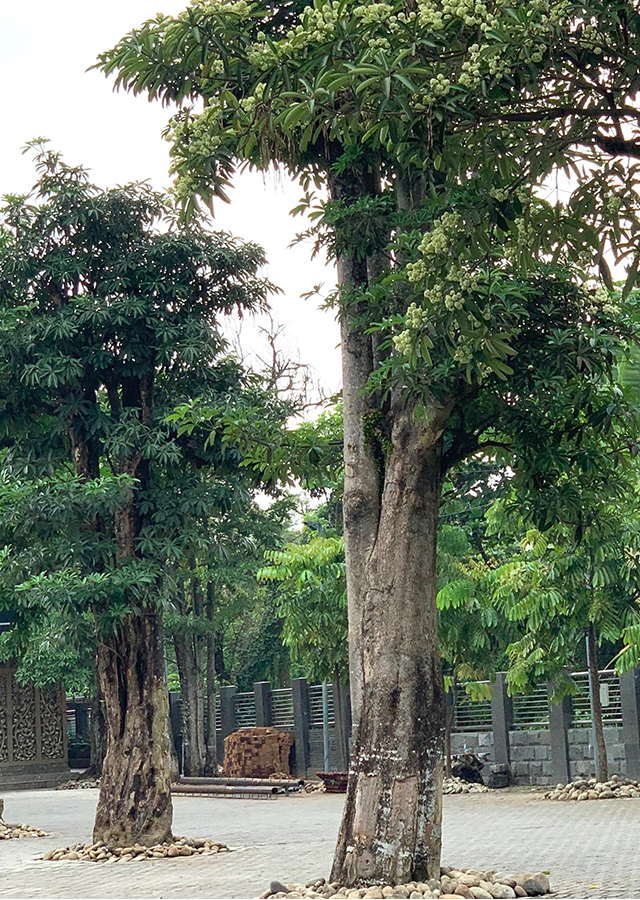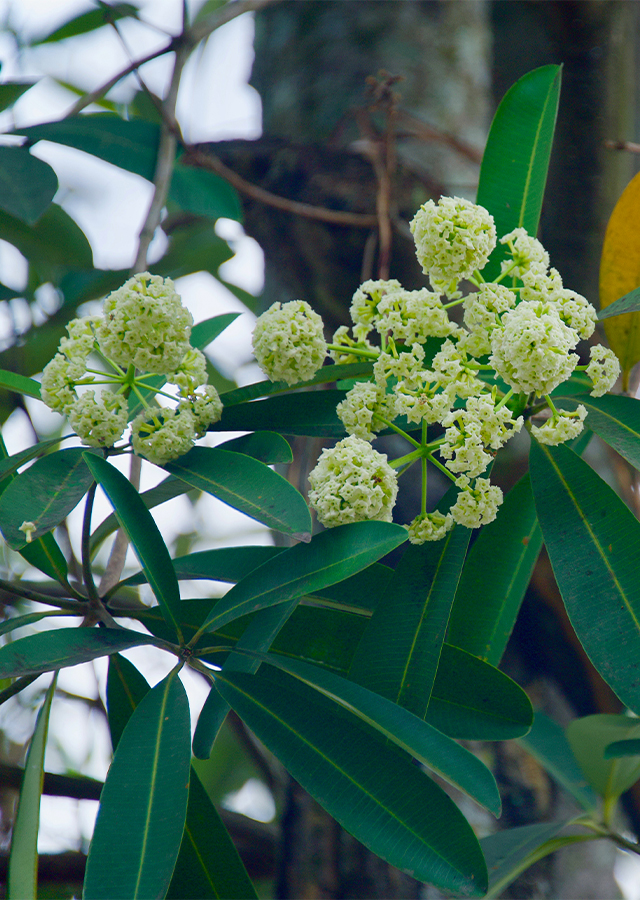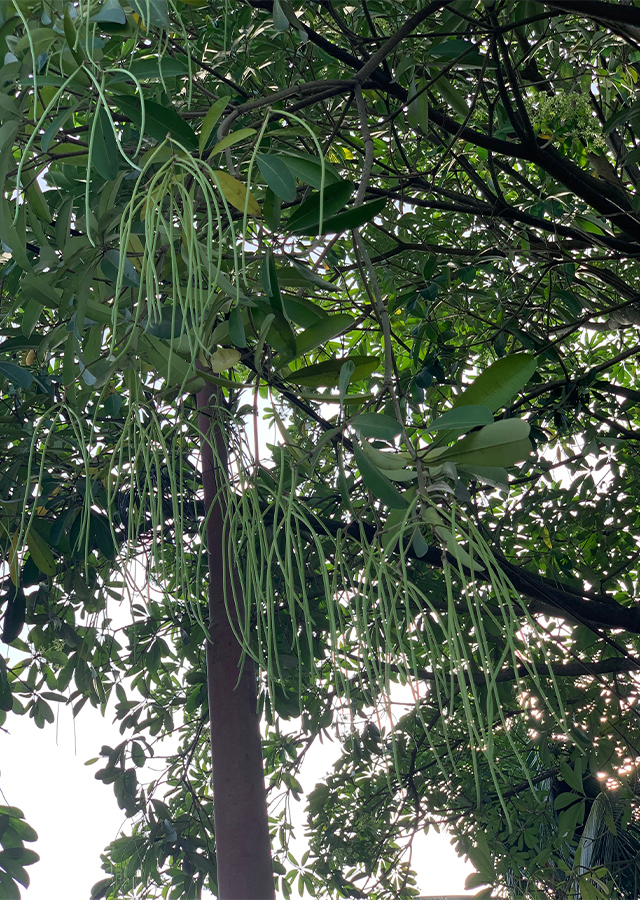Indian Devil Tree
Alstonia scholaris (L.) R.Br.
Apocynaceae
Location in our garden
Principal



Synonym
Alstonia kurzii Hook.f.
Alstonia spectabilis Kurz
Echites pala Buch.-Ham. ex Spreng.
Habitus
Trees. A medium to large tree, growing up to about 40 m tall.
Part Used
Leaves
Bark
Latex
Roots
Growing Requirements
Full Sunshine
Habitat
Forest
Coastal
Overview
It is native to the lowland and mountain rainforests of the Malay Peninsula, Australasia and the Indian subcontinent. In the various folk and traditional medicinal systems in Asia, Australia and Africa, the Devil's tree is an essential medicinal plant. In moist, protected areas, the tree is often exploited for its valuable timber and is considered to be a good timber tree. In the IUCN Red List of Endangered Species, the plant is listed as 'Least Concern.
Vernacular Names
Yaelele Haale (Canada), Echite (French), Zitronen (German), Pule (Japanese),Tinpet (Laos), Chhatiwan (Nepalese), Dalipoen (Philippines), and Hoa sữa (Vietnamese).
Agroecology
It grows best in areas with an average annual temperature of between 12 and 32 °C and an average annual rainfall of between 1.200 and 1.400 mm. In fertile, moist, but well-drained soil, it prefers a sunny location.
Morphology
- Trunk - cylindrical and up to 125 cm in diameter, on older trees it is strongly fluted.
- Bark - pale brown, smooth – scaly, with large horizontal lenticels.
- Leaves - The leaves on the upper side are shiny, while the underside is greyish. In whorls of three to ten, leaves occur; the petioles are 1-3 cm.
- Flowers - strongly perfumed, about 5-10 mm diameter. Calyx lobes about 1.8-2.2 mm long, sparsely or densely pubescent.
- Fruits - long thin pods 15 – 32 cm in length, green when young turning to brown as they matures.
- Seeds - oblong, not acuminate or caudate at either end, about 4-5 x 0.9-1.2 mm, hairs about 7-13 mm long.
Cultivation
Propagated generatively by seeds. Seeds are best sown in a sunny place with sprouting starting after 12 days and continuing for about 3 months. The germination rate of fresh seeds is high, almost 100%. Seeds can be stored for 2 months in closed tins, maintaining a 90% germination rate.
Chemical Constituents
Alkaloids (echitenine, ditamine, ditaine, alstonine, reserpine, tetrahydroalstonine, alstonidine, yohimbine), terpenoids, steroids, saponins, coumarin, phlobatanin, phenolates, flavonoids.
Traditional Medicinal Uses
- Its reported pharmacological activities include anthelmintic, anticholinergic, antispasmodic, astringent, emmenagogue, febrifuge, tonic, vulnerary, and has proven a valuable cure for chronic diarrhoea and the advanced stages of dysentery.
- Health benefits include chronic and intermittent fever, obesity and cholesterol, jaundice, dandruff and head lice, abscesses, and cures.
- The bark is a bitter, astringent, alterative herb that lowers fevers, relaxes spasms, stimulates lactation and expels intestinal worms.
- For the treatment of bowel complaints, stomach pain, fever and irregular menstruation
- The latex obtained from the bark is known to be good tonic, vermifuge, neuralgic and toothache medication.
- The leaves are used for treating beriberi, dropsy and congested liver
- The tree's milky juice is added to the ulcer. A decoction is used as a wash and as a gargle, for skin diseases.
- Juice from the flowers of the Indian devil tree with honey is useful in asthma conditions.
- As a good remedy against skin diseases, a poultice made from the leaves has been published. An infusion of crushed leaves is used to cleanse contaminated wounds.
- Leaf tips are used to treat stomatitis with roasted coconut.
- For recurrent diarrhea and dysentery, the bark is primarily useful.
Part Used
Reference Sources
- de Candolle, B.A., de Candolle, W.A., (1995). Alstonia. In: Li, P., Leeuwenberg, A.J.M., Middleton, D.J., eds. Apocynaceae - Flora of China 16: 155.
- Soerianegara, I., Lemmens, R.H.M.J., eds. (1993). Plant Resources of South-East Asia, No. 5(1) - Timber trees: Major commercial timbers. Pudoc Scientific Publishers, Wageningen.


